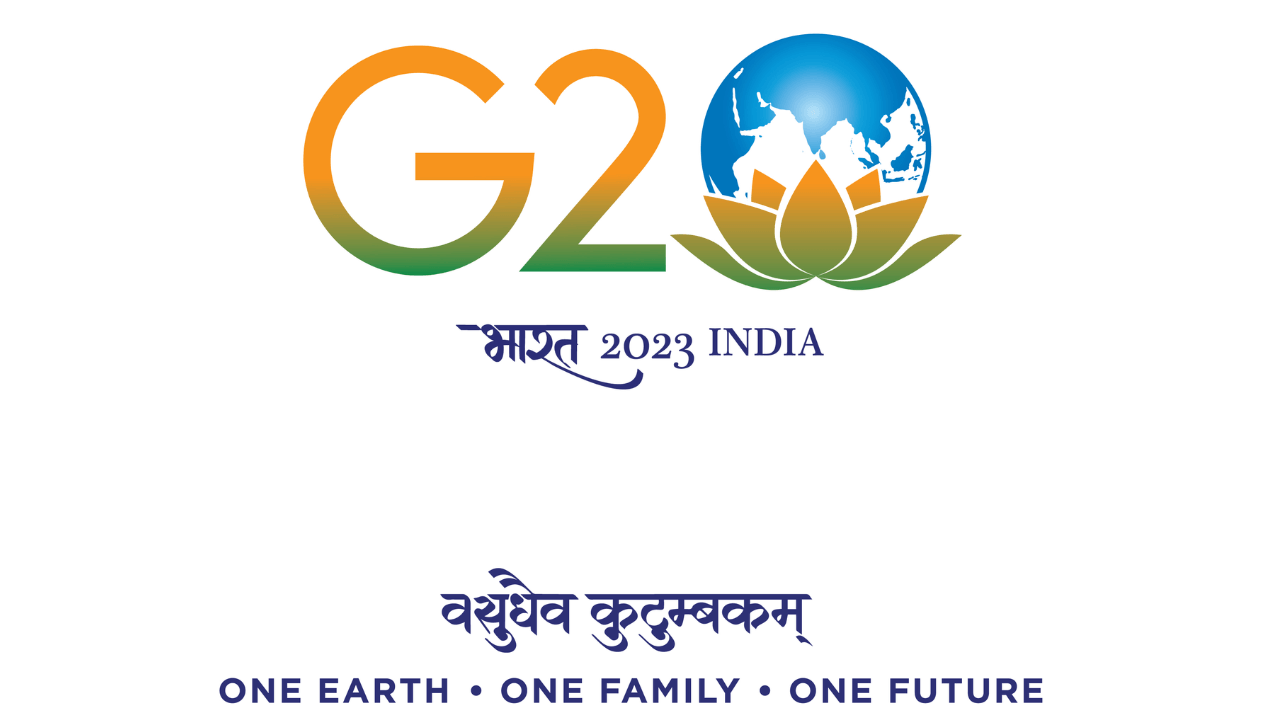India’s G20 presidency is highly significant as it takes on a central role in shaping global economic policies and tackling critical global issues. As the G20 brings together the world’s major economies, it provides a unique opportunity for India to lead global discussions and bring about meaningful change.
The logo and theme chosen for India’s G20 Presidency play a vital role in expressing the nation’s vision, priorities, and dedication to promoting global cooperation. The logo, accompanied by the selected theme, reflects India’s commitment to inclusive and sustainable development. It also signifies India’s determination to make substantial contributions to the global economy and address urgent global challenges.
The Logo and Theme of India’s G20 Presidency
The G20 Logo takes inspiration from the vibrant colors of India’s national flag: saffron, white, green, and blue. It combines the image of planet Earth with the lotus, India’s national flower, symbolizing growth amidst challenges. The Earth represents India’s pro-planet approach, emphasizing harmony with nature. Below the G20 logo, the word “Bharat” is written in the Devanagari script.
The theme of India’s G20 Presidency is “Vasudhaiva Kutumbakam” or “One Earth · One Family · One Future,” taken from the ancient Sanskrit text of the Maha Upanishad. This theme highlights the value of all forms of life – humans, animals, plants, and microorganisms – and their interconnectedness on Earth and in the wider universe.
The theme also emphasizes LiFE (Lifestyle for Environment), promoting environmentally sustainable and responsible choices at both individual and national levels. It aims to inspire globally transformative actions that lead to a cleaner, greener, and more sustainable future.
The logo and theme of India’s G20 Presidency send a strong message about the country’s commitment to fostering fair and balanced global growth. Amidst challenging times, India aims to pursue sustainable, responsible, and inclusive development for all. The logo and theme reflect India’s unique approach to living in harmony with the environment and embracing a holistic perspective.
India’s G20 Presidency also marks the beginning of “Amritkaal,” a 25-year period that starts from the 75th anniversary of India’s independence on August 15, 2022, and leads up to its centenary. During this time, India envisions a futuristic, prosperous, inclusive, and developed society, with a focus on human well-being at its core. The G20 Presidency is an important step towards realizing this vision.
What is G20?
The G20, or Group of Twenty, is an international forum consisting of 19 countries and the European Union. It brings together the world’s major economies to discuss and coordinate global economic issues. The members of the G20 represent around 80% of the world’s GDP and two-thirds of the global population.
The G20 was established in 1999 to provide a platform for Finance Ministers and Central Bank Governors to discuss global economic and financial matters, especially after the Asian financial crisis. It later evolved into a forum for Heads of State and Government in response to the 2007 global economic crisis, becoming the main forum for international economic cooperation.
The G20 holds an annual Summit, led by a rotating Presidency. Initially, it primarily focused on macroeconomic issues, but over time, its agenda has expanded to cover a wide range of topics. This includes trade, sustainable development, health, agriculture, energy, environment, climate change, and anti-corruption.
The primary objective of the G20 is to promote global economic growth, financial stability, and sustainable development. The forum provides a platform for leaders to address key challenges facing the global economy, such as trade, investment, employment, and climate change. Discussions within the G20 cover a wide range of topics, including macroeconomic policies, financial regulation, energy, and development.
The G20 holds annual summits where heads of state and government from member countries gather to engage in high-level discussions and make joint decisions on policy matters. Additionally, there are meetings at the ministerial and working group levels throughout the year to focus on specific issues and prepare recommendations for the leaders.
The G20 operates on the principle of consensus, aiming to achieve cooperation and coordination among member countries to address global economic challenges effectively. It also collaborates with international organizations, such as the International Monetary Fund (IMF) and the World Bank, to leverage their expertise and support the implementation of agreed-upon policies.
India’s G20 Presidency 2023
The New Delhi Leaders’ Summit, scheduled for September 9-10, 2023, will mark the 18th G20 Heads of State and Government Summit. This summit serves as the culmination of various G20 processes and meetings that have taken place throughout the year, involving ministers, senior officials, and civil societies.
During the New Delhi Summit, the G20 Leaders will adopt a declaration that reflects their commitment to the priorities discussed and agreed upon during ministerial and working group meetings. This declaration, known as the G20 Leaders’ Declaration, will serve as a testament to the Leaders’ dedication toward the agreed-upon goals and initiatives.
Special Invitees this Year
- Bangladesh
- Egypt
- Mauritius
- Netherlands
- Nigeria
- Oman
- Singapore
- Spain
- United Arab Emirates (UAE)
- 3 August Current Affairs 2023 in English
- MoU Between Subroto Mukerjee Sports and Education Society and All India Football Federation (AIFF) to Promote Football at Grassroot Level
- Dr. Mansukh Mandaviya Delivers Keynote Address at the 13th Indian Organ Donation Day ceremony
- Education Ministry Forms Expert Panel on Anti-Discrimination in Higher Education
- Concerns Arise Over Cheetah Deaths at Kuno National Park
FAQs
What is the troika of G20?
Under the troika system, the host country of the current year’s G20 Summit assumes the role of the “Chair,” while the previous year’s host becomes the “Sherpa.” The Sherpa acts as a representative for the previous host country and provides continuity in policy discussions and decision-making.
The troika system allows for effective coordination and knowledge transfer between consecutive G20 presidencies, enabling the G20 to maintain its agenda and work towards its objectives.
